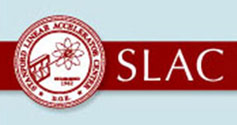

Thursday - August 7, 2008
SLAC Today is
available online at:
http://today.slac.stanford.edu
In this issue:
Stanford University and SLAC Project Management System Awarded DOE Certification
Science Today: Pulling QCD Predictions Out of a (Black) Hat
B Factory Symposium
Secretary Bodman Speaking Today
 |
 |
|
Thursday - August 7, 2008 |
Stanford University and SLAC Project Management System Awarded DOE Certification Congratulations to Stanford University and SLAC—last month, the Department of Energy’s Office of Engineering and Construction Management awarded the university and lab DOE Earned Value Management System (EVMS) certification for projects costing more than $20 million. "The certification was a real positive outcome of a process that has been going on for about two years. Thanks to the work of many here at SLAC and DOE’s site office, we now have a certified system," said Mark Reichanadter, deputy director for the Linac Coherent Light Source. "Good news for SLAC is that this certification will apply to other projects here at SLAC." The award certifies the integrity of the project management and accounting systems used by Stanford and SLAC to manage large projects for the DOE. Although the award follows a review of the systems associated with the LCLS project, the certification applies to all acquisition projects with budgets greater than $20 million. The EVMS certification gives an added boost of credibility to the review and approval process for future projects. So far the EVMS certification has been granted to only a select handful of labs in the DOE complex, although all labs must eventually meet EVMS certification requirements. |
||
|
|
||
 Pulling QCD Predictions Out of a (Black) HatThe Large Hadron Collider will start taking data at the end of this year, opening the door to particle collisions at energies in the trillions of electron volts (tera-electron volts, or TeV). Exploring the behavior of elementary particles at these energies, LHC researchers expect to uncover the secret of how particles get their masses. Many theoretical models have been proposed and are waiting to be tested. The LHC is, first of all, a proton-proton collider. Since protons are composed of quarks and gluons, most of the events that the LHC will produce will come from the strong interaction that binds these particles in the nuclei of atoms. This area of high-energy physics is known as Quantum Chromodynamics (QCD). To test the theories, and even to be persuaded that new physical processes are being observed, theorists need to understand QCD very precisely. Many of the computations needed are so difficult that, for a long time, they were considered intractable. But now, working with Lance Dixon and collaborators at SLAC and elsewhere, I am writing a computer program called BlackHat that we hope will do these computations automatically.
The predictions of QCD are derived from Feynman diagrams, models named for their
key creator, Richard Feynman. At the first level, only the simplest, so-called
"tree" diagrams are needed. For precise predictions, though, it is also
necessary to analyze more complicated diagrams in which virtual particles travel
around closed loops.
|
Secretary Bodman Speaking Today
At this Department of Energy all-hands meeting, Secretary Bodman will speak to the reality of our energy and national security challenges. He will highlight the unique ability of the DOE complex to respond to those challenges both today and moving forward. B Factory SymposiumA symposium in recognition of the achievements of PEP-II and BABAR is scheduled for October 27, 2008 at Stanford University's Schwab Residential Center, Vidalakis Hall. The program will cover a wide range of topics, including a retrospective on bottom, charm and tau physics at PEP-II and BABAR, together with a look forward to the future of heavy flavor physics. The symposium will be followed by a reception at the Schwab Center and dinner at Ming's Chinese Cuisine in Palo Alto. Symposium attendance is free, but registration is required. The cost of the dinner is $10 for students and postdocs and $60 for all others. Spouses and other guests are welcome at the symposium and dinner. Visit the event Web site to register. |
Events (see all | submit)
Access (see all)
Announcements
|
| | ||
|
|
||
 <%
Response.AddHeader "Last-modified", getArticleDate()
'Response.AddHeader "Last-modified","Mon, 01 Sep 1997 01:03:33 GMT"
'Monday, December 06, 2010
%>
<%
Response.AddHeader "Last-modified", getArticleDate()
'Response.AddHeader "Last-modified","Mon, 01 Sep 1997 01:03:33 GMT"
'Monday, December 06, 2010
%>View online at http://today.slac.stanford.edu/. |
||